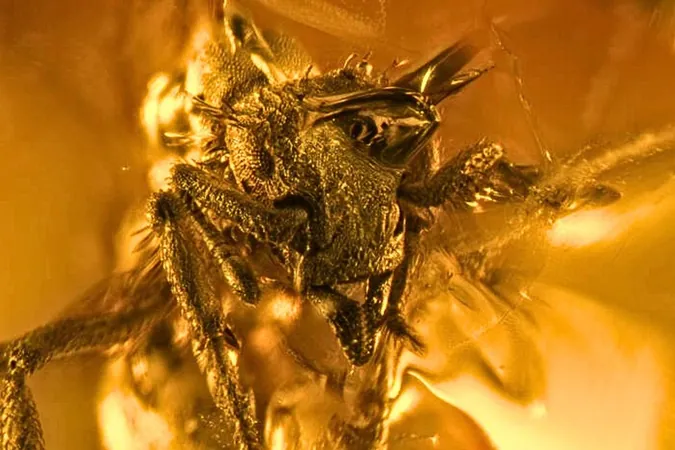
Unveiling a 16-Million-Year-Old Treasure: Ancient Ant Encased in Amber Discovered in the Caribbean
2025-04-17
Author: Chun
A Remarkable Discovery in the Dominican Republic
In an astonishing find, scientists have uncovered a 16-million-year-old ant fossil preserved in amber on the Caribbean island of the Dominican Republic. Dubbed Basiceros enana, this is the first-ever fossil of a dirt ant unearthed in the Caribbean, capturing the attention of researchers and nature enthusiasts alike.
A Peek into the Past: The Ancient Ant Species
Despite measuring a mere 5 millimeters in length—smaller than its contemporary relatives, which can reach 9 millimeters—this perfectly preserved specimen offers a treasure trove of insights into its ancient world. Researchers from the New Jersey Institute of Technology revealed in their study published in *Proceedings of the Royal Society B* that this remarkable fossil provides compelling evidence that the dirt ant group roamed the Caribbean islands before becoming extinct between 23 and 5.3 million years ago.
The Mysteries of Amber and Fossils
Amber, a time capsule of nature, forms from tree resin that hardens over millions of years. This fossil's detailed preservation allows scientists to study its features extensively. Co-author Gianpiero Fiorentino remarked, "It's like finding a diamond; this fossil is distinctly different from modern relatives, challenging our understanding of Basiceros evolution." Prior to this, all known Basiceros ants were exclusive to regions in Central and South America.
Camouflage Kings: The Hidden Life of Dirt Ants
Renowned for their impressive camouflage skills, dirt ants use specialized hairs to blend seamlessly into their environments. These adaptations make them nearly invisible to both predators and researchers. Fiorentino's team used advanced imaging techniques like 3D reconstruction and micro-CT scanning to glean invaluable data about the ant's anatomical makeup, revealing that it had already developed its signature camouflage traits.
What This Discovery Means for the Evolutionary Puzzle
The presence of Basiceros in Dominican amber suggests prehistoric land bridges may have allowed these ants to reach the Caribbean from mainland regions. Despite their evolutionary adaptations—such as sharp mandibles for predation and a unique head shape—these ants vanished, likely due to changing environments or competition among species. Fiorentino pointed out that one-third of ant genera have gone extinct in today's Dominican Republic since the amber's formation.
Lessons from the Past: Understanding Extinction
As researchers piece together the mysteries surrounding Basiceros, they explore why some species persevere while others become extinct. Barden states, "This fossil serves as a fragment of a larger puzzle that could shed light on the ongoing threats to biodiversity and the impacts of human activity on extinction rates today." This discovery not only enriches the history of ants but also serves as a crucial reminder of the importance of protecting our planet's diverse life forms.




 Brasil (PT)
Brasil (PT)
 Canada (EN)
Canada (EN)
 Chile (ES)
Chile (ES)
 Česko (CS)
Česko (CS)
 대한민국 (KO)
대한민국 (KO)
 España (ES)
España (ES)
 France (FR)
France (FR)
 Hong Kong (EN)
Hong Kong (EN)
 Italia (IT)
Italia (IT)
 日本 (JA)
日本 (JA)
 Magyarország (HU)
Magyarország (HU)
 Norge (NO)
Norge (NO)
 Polska (PL)
Polska (PL)
 Schweiz (DE)
Schweiz (DE)
 Singapore (EN)
Singapore (EN)
 Sverige (SV)
Sverige (SV)
 Suomi (FI)
Suomi (FI)
 Türkiye (TR)
Türkiye (TR)
 الإمارات العربية المتحدة (AR)
الإمارات العربية المتحدة (AR)